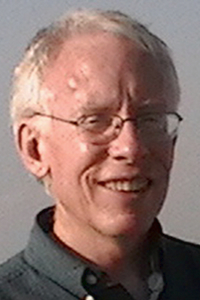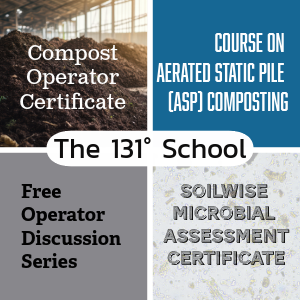
William E. Toffey
BioCycle May 2015
BioCycle editor Nora Goldstein recently passed along a request from researcher John Toth at the University of Pennsylvania Veterinary College: What is the nitrogen and phosphorus content of Philadelphia’s biosolids?
Six years have passed since I served as biosolids manager for the City of Philadelphia and reviewed monthly analytical reports on the biosolids. But I still know folks, so I jumped to respond. I was also very curious; what on Earth prompted this Vet College’s request? I called John Toth. It seems the Penn study is on nutrient flows in Philadelphia — food in, biosolids out, at least with respect to nitrogen (N) and phosphorus (P). I am still wondering: What are they really up to?
In a “there are no coincidences” moment, I was primed for the “nutrient flows” question, as I had just read a recent CSA News article (published by the Crop Science Society of America), “Ammonia and nitrate losses from agriculture and their effect on nitrogen recovery in the EU and the U.S.” This was a popularized version of larger journal article in the Journal of Environmental Quality. I learned that, despite heavy incentives and/or regulations, the best result that can be expected for controlling losses of N applied to farm crops is 50 percent. With the world barreling toward 9 billion people, all seemingly wishing to eat McDonald hamburgers (or an equivalent meat-based diet), the implications for accelerating releases of N and consequent degradation of ecosystems seem overwhelmingly bleak. I took from this article the message that humankind is causing malicious flow of N from its origin as a benign atmospheric gas, ultimately to excess aquatic concentrations of nitrate and to potent greenhouse gas emissions of nitrous oxide.
I searched deep in my imagination for the seeds of an argument that, with some brilliant new technology, perhaps not yet visible on the horizon, biosolids could be counted upon to save the world from this dangerous one-way flow of N. After all, biosolids helps “close the loop” on N flows. With biosolids recycling, in my naïve musings, we would have a return to a preindustrial balance between natural biological fixation of N, soil organic matter (supplemented, where needed with biosolids and other manures), and crops grown in practices of “precision agriculture.”
A New “N Vision”
A vague notion, yes. But then, several “coincidences” — all within the same period of time — clarified this vision for me. I am redecorating my bedroom, and in clearing a pile of books on my nightstand I found at the bottom Hugh Gorman’s “The Story of N: A Social History of the Nitrogen Cycle and the Challenge of Sustainability.” Gorman had sent me a complimentary copy over a year ago for my having given him his first ever tour of a wastewater treatment plant, and for my having supplied him enough background on biosolids that he included this info and my name in his book. But his central idea is that “all stresses associated with population increases are nitrogen-related,” a situation demanding “adaptive learning processes” that can best arise from a global “ethical project of the first order.” That project is the emergence of an “ecological economy” in which “industrially-fixed nitrogen” is capped, thereby compelling investment in, among many other things, “technology to extract nitrogen from urban sewage.”
That is a vision I can embrace — highly valued biosolids nutrients. If production of urea and ammonium nitrate were capped by global edict, the wastewater industry would witness the value assigned to its biosolids-borne N escalate steeply. Gorman’s vision, however, seems inconceivably remote. The current paralysis in the global enterprise to mitigate climate change through reducing emissions of greenhouse gases, particularly emissions from fossil fuels, is clear indication that achieving any such global consensus is doomed.
Nevertheless, the seriousness of the out-of-whack N cycle is impossible to overstate. Gorman’s book cites an article from Nature several years ago titled: “Agricultural sustainability and intensive production practices.” This article makes this important point: “Today, only 30 to 50 percent of applied nitrogen fertilizer and about 45 percent of phosphorus fertilizer is taken up by crops…. Current incentives favour increased agricultural production at the expense of ecosystem services… Unless reward structures also reflect the value of ecosystem services, there will be little incentive for the private sector to invest in sustainable agricultural methods. Without adequate investments, yield gains and environmental protection may be insufficient for a transition to sustainable agriculture.”
Investment Needs
The global imperative is Sustainable Agriculture! Is there an argument to be made for advocating biosolids use as a step toward sustainable agriculture? I would like to think so, but recently, two events in one week coincidentally pointed to two important investment needs, the kinds that Gorman envisions arising in an ecological economy:
Investment Need #1: Specialized land application equipment. In another coincidence during this time period, I heard from Dr. Joshua McGrath, now associate professor at the University of Kentucky, but formerly at the University of Maryland, where his work on innovative land application equipment caught the Mid-Atlantic Biosolids Association’s (MABA) attention and an invitation to present at MABA’s 2012 Biosolids Nutrient Symposium (his presentation was Land Application Technology Solutions). His project has been development of application equipment for subsurface injection of poultry manure, such that nutrients are efficiently placed near crop roots and beyond reach of erosive forces of rainfall and wind. McGrath’s email explained that progress has been slow and that he has doubts for its applicability to biosolids. Unless biosolids products are dry, but not too dry, equipment he is designing will not be directly usable for biosolids. So our industry needs to meet him half way by investing in technology development for processes that yield a mostly dry biosolids product (Class A compliant dryers are not necessary here).
Investment Need #2: Mitigate the imbalanced proportion of nitrogen and phosphorus in biosolids. The message of this investment need was emphatically stated (again in the same period of time) by one of New Jersey’s few remaining dairy farmers, who is participating in an innovative research project at Landis Sewerage Authority to supplement the authority’s anaerobic digesters with farm and agricultural industry organic wastes. This farmer is being offered a return to his farm of “digestate” produced from Landis’s acceptance of his cows’ manure for codigestion. But the farmer’s position was that, unless Landis has some way of extracting the P, he can’t afford to take very much of the biosolids, or “P build-up will put me out of business.”
Whoa! A stake in the ground! But, I might have just the answer for this farmer! This brings me to this final “coincidence.”
I received the weblink to a video introduction to Renewable Nutrients, a company piloting “phosphorus washing,” with a brand name “Quick Wash,” for chemically removing P from biosolids. Back in late January, I had been invited to witness this company’s pilot operation at MABA-member Ephrata Wastewater Treatment Plant, and was pressed to offer remarks to a videographer on the possible importance of P extraction from biosolids. These comments did not end up wholly on the editing floor, so I am in this video, now posted to the company’s website. Who knows where this technology will go, but the development team (all MABA members, by the way) are working hard to get there. This is another example of the “ecological economy” investing in sustainable agriculture.
So, Nora’s message started me on an inquiry into the terrible urgency for global sustainable agriculture. But that inquiry required my acknowledging the shortfall of biosolids recycling as one solution. We in the wastewater profession could very well be the linchpin, the important bridge between agriculturalists (delivering on a single-minded mission of affordable food production for the world) and environmentalists (delivering on protection of ecological services in nature).
But we are not there, yet. We feel stuck in the middle between these two camps, instead of seeing ourselves as the valued linchpin. If we take Gorman up on his challenge to ramp up investment in technology to effectively deploy the nutrients in biosolids, as we see with Dr. McGrath and with the Renewable Nutrients team, perhaps we can indeed become the linchpin. We may yet one day effectively position biosolids as a Sustainable Nutrient Solution.
William Toffey is Executive Director of the Mid-Atlantic Biosolids Association (www.mabiosolids.org). He can be reached at wtoffey@mabiosolids.org.












